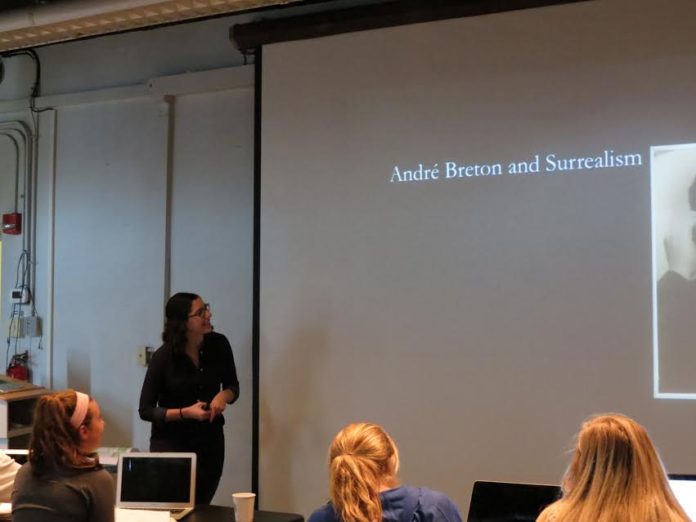Transylvania is welcoming a multitude of new faculty and staff this year. There are a total of five new professors this semester, and over the next month The Rambler will be introducing each of them to the campus. This is a way for the members of Transylvania to become familiar with the new professors as well as to truly welcome them to the Transy community.
Emily Goodman is the newest addition to the Art History department. She is right out of graduate school at the University of California, San Diego where she received her Ph.D. in Art History, Theory, and Criticism. Goodman completed her undergrad at McGill University in Montreal, Quebec, Canada where she doubled majored in Art History and Psychology and minored in English Literature.
Due to the size of both schools, Goodman saw students being given a “disservice” by not having professors they could talk to and knew she wanted to work at a smaller school.
“I wanted to be able to work with students one on one,” said Goodman.
Goodman is really interested in women in art and that was another thing that drew her to Transy.
“Nancy Wolsk was really interested in women in art history as part of her teaching and it was really nice to be able to step into a small school and know there was already a class for what I do,” said Goodman.
Goodman also specializes in American Contemporary Art.
“I look at art that has no commercial value, for the most part, and has no object value. So I look at a lot of performance art and I look at a lot of activist art,” said Goodman. “I think part of the reason I got very into activist art and socially-engaged art practices in contemporary art was that I could see it had immediate consequences. It was art that was meant to affect change.”
Goodman’s favorite medium is photography because it “allows you think about the world as snippets and snapshots and also instantaneous.” She added that she also likes “that photography, while seeming entirely realistic, is also one of the mediums that lies the most. You can do anything to manipulate an image.”
Goodman herself is not artistic, but she wants to press to similar students that you can still study art history.
“Art History is not just for people who like museums, who think they want to be curators or art students. Art History can be approached by anybody, particularly if you’re not artistically inclined, I can tell you from personal experience,” said Goodman.
A required class her sophomore year of high school is what first pulled Goodman to the field. She had not expected to like the course, but ended up developing great interest.
“I’ve always loved history and something about images really made history come alive for me,” said Goodman.
She also expressed that art is not limited to drawing, painting, and ceramics, but encompasses a vast array of forms. Goodman explained that she knows a specific contemporary artist that “plays games in World of Warcraft and has an actual initiative in World of Warcraft that is part of her practice and sometimes she will have public performances where she plays World of Warcraft and makes statements about how women are treated in gaming.”
Goodman sees teaching here as not only a chance to inform students on artworks, but to show a new way to look at the world and its images.
“What I’m most excited about being here is this is a university that holistically really challenges students to think more broadly and to think about their education and their experience in the world,” said Goodman.



